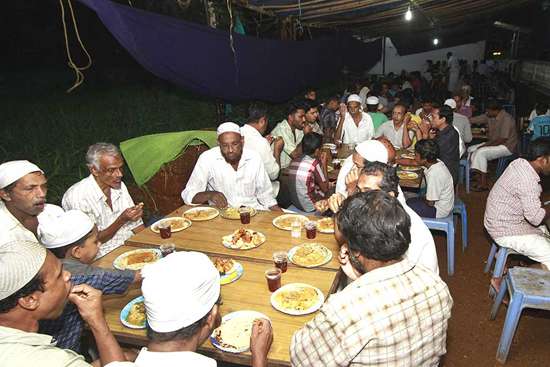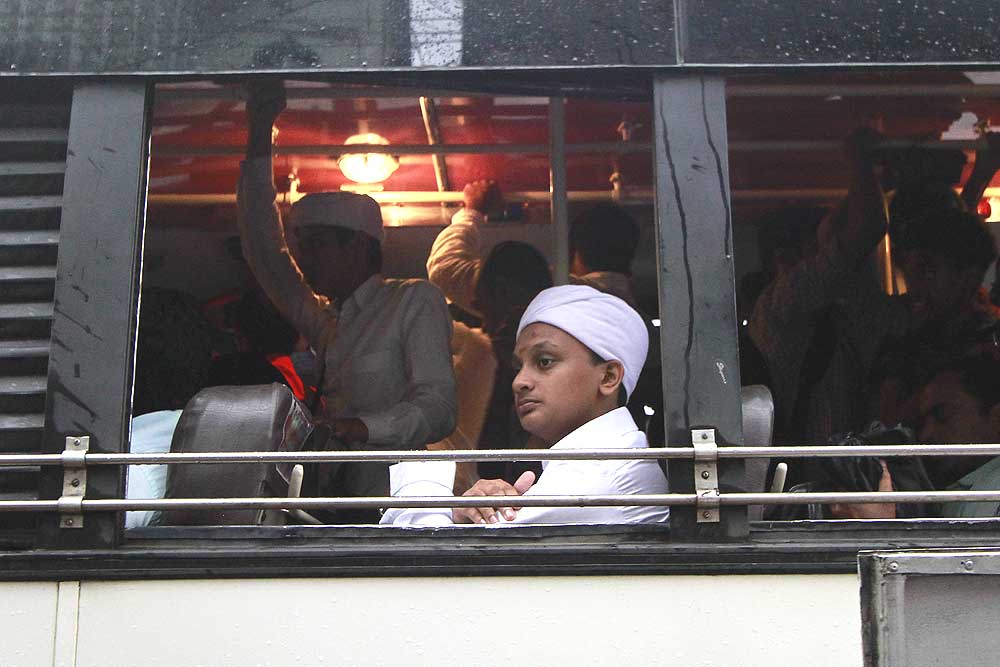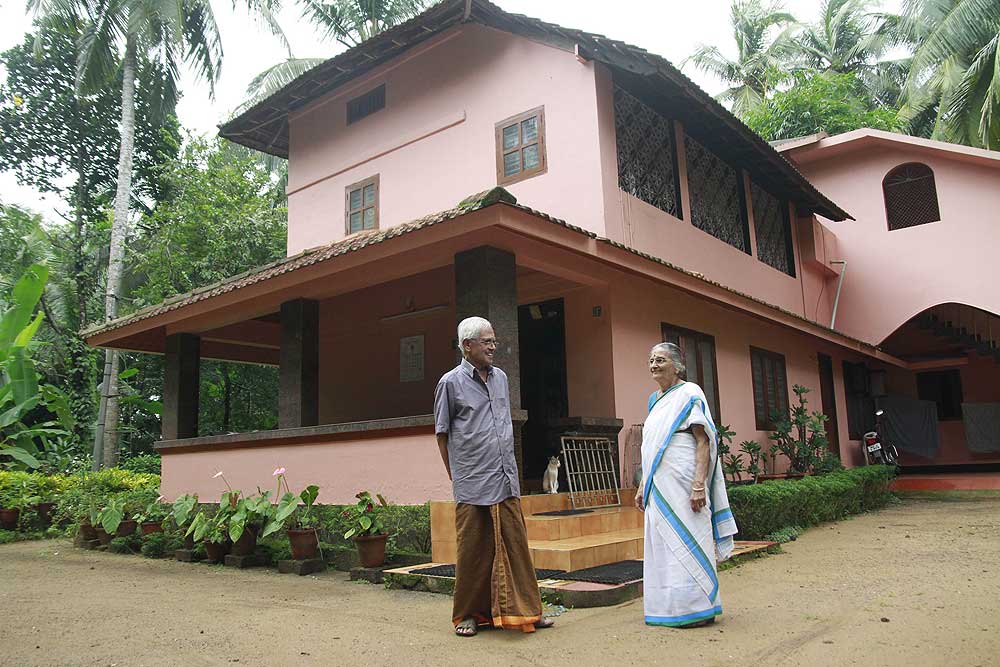
Malappuram, carved out for a religion, now holds a key to Kerala
SIgnboards with the ‘Al’ prefix are the second indicator that you are in Mappila (Kerala Muslim) country, the first, of course, being a sartorial style that you cannot miss. This is Malappuram district in north Kerala. Once considered a basket case for its economic, educational and social backwardness, the landscape now bristles with confidence, one that only prosperity, political prowess and education can bring. Malappuram, with over 60 per cent Muslims, was carved out from the districts of Kozhikode and Palakkad way back in 1969 by the then chief minister, the Communist E.M.S. Namboodiripad. It was a political move to appease the Left government’s coalition partner—the Indian Union Muslim League (IUML)—who had demanded a district for the Muslims. Interestingly, it was a first time for the IUML in government. Today, its clout in the Congress-led UDF regime has jumped manifold. With five ministers and crucial portfolios, the IUML can even claim they are in charge of the ‘Kerala sarkar’.
But beyond the sleepy boundaries of Malappuram, there are other forces at play now. A new brand of nationalism seeks to divide rather than unite, one where patriotism hinges on one’s religious identity. Questions have also been asked of Malappuram—is it a “mini Pakistan”, is there a rise in religious fundamentalism there? The district authorities says Malappuram is a peaceful district, that there is absolute communal harmony. But one has just to trawl the net to see the fear-mongering being drummed up—reports of the Hindu minority’s struggle to exist here and further, about the love jehadis roaming the streets of Malappuram on the lookout for Hindu girls to convert to Islam. A website (www.hinduexistence.org) even harks back to 1921 and the Mappila rebellion to remind people of the “devastating revolts and massacres”—described as “killing lakhs of innocent Hindus overnight”.
In order to verify this “account of history”, we travel further north from Malappuram town to Parappanangadi. We cross the angry, muddy Kadalundi river in full spate and zig-zag through roads lined with giant ‘Gulf houses’, each trying to garishly outdo the other (some six lakh people from the district work in the Gulf today.) We pass the historical town of Tirurangadi known for its major revolts against the British and arrive in Parappanangadi to meet with historian M. Gangadharan, who’s authored a book on the revolts of the region, The Malabar Rebellion. Gangadharan, 80, refutes the argument that the Mappila rebellion was any sort of vendetta against the Hindus. He says, “The Mappila resistance was against the British political set-up that had imposed high taxes and empowered the janmis (usually from the Hindu high castes) to exploit the Mappila tenants. They did not attack the Hindus indiscriminately but the violence did frighten them and many did leave the area.”
The Muslim grievances and the revolts were successfully harnessed by Gandhiji during the freedom struggle. Says Gangadharan, “In the second decade of the 20th century, when the Mappilas organised themselves, they received support from the nationalist movement that cleverly linked this rebellion to the Khilafat agitation…. Trade ties between India and the Arab countries meant that the Khilafat movement affected Kerala’s Mappilas. Initially, the movement wasn’t violent but the British oppression and tortures forced the hand of Mappilas. Today, the Hindu fundamentalists are trying to change the narrative to suit their own needs.” On a personal level, Gangadharan says he’s never felt insecure living in a Muslim-dominated area.
This predilection for protests is seen even today. In Parappanangadi town, we witness a silent procession of schoolchildren marching against the Israel attacks in Gaza. K.T. Jaleel, independent MLA (Left-backed) from Thavanur, says Malappuram partakes of Kerala’s anti-imperialistic streak, “We saw protests when Saddam Hussein was killed and we continue to see protests against imperialistic powers. But we are not communal, even post-Babri Masjid there were no clashes here. The Muslims in Malappuram are secular and progressive and have merged with the mainstream.” At the same time, a sullen withdrawal has often been ascribed to them too, as is a tendency to adopt the visible gestures and cues of a modern pan-Islamism, especially in response to inimical global and domestic politics.

There is an underlying, historical delicacy too. Many Muslim political leaders of Malabar had supported the Partition, crowding out nationalist Muslims who didn’t—their grievance was that India’s mainstream leaders did not come to their aid during the Mappila rebellion. So the creation of a district for Muslims was always viewed with some diffidence by non-Muslims. There are few complaints in the district itself though. “They are secular and progressive,” says Manamboor Rajan Babu, who’s lived in Kuttinangadi for the past 39 years. Rajan Babu is an ex-policeman, novelist and editor of Innu, an inland magazine. “I live in the midst of three Mohammeds,” he jokes. “The neighbours are caring folks. I settled here because of my Muslim friends. The majority do not accept the fundamentalist views of the fringe elements, which is why it doesn’t get much traction in Malappuram.” And anyway, the IUML is in the political business here and they won’t allow the fringe to grow, he feels.
___________________________________________________________
With five ministers and crucial portfolios, the Muslim League can even say they are in charge of the ‘Kerala sarkar’.
____________________________________________________
The IUML itself is a curious entity, as corrupt as any other Indian party (if media reports are to be believed), but without any overt fundamentalist agenda. A small reformist group called Aikya Sangham was created in the 1920s to ameliorate the lot of Muslims and harmoniously settle land disputes between Hindus and Muslims. From this stock arose the Muslim League in Kerala and that morphed into the IUML. The League supported the formation of Pakistan so after independence they were sidelined by the nationalist parties. Says political analyst and advocate A. Jayashankar, “After the ems regime fell in 1969, they joined the Congress and ever since have been a major factor in UDF governments, especially since 2001 when the number of their ministers went up to four. At present, they have five. The fifth ministerial berth going to an IUML MLA from Malappuram created a furore in Kerala. The Nairs (NSS) and Ezhavas (SNDP) have felt insecure ever since. The rise in the BJP voteshare in Kerala can be attributed to the flexing of muscles by the Muslims in the ‘minority’ government in Kerala.”
The delimitation based on area population after the 2011 census gave a further boost to the IUML. Most districts in Kerala showed negative growth, but Malappuram registered a decadal population growth of 13.45 per cent since the census. The number of legislative constituencies was increased in the district from 12 to 16 in the last polls. “The Muslim-dominated areas of Kozhikode, Kannur and Palakkad also benefited with an increase in one seat while the Christian-dominated belt of Kottayam, Thrissur and Pathanamthitta lost four seats due to a decline in population,” says Jayashankar. In the 2011 assembly polls, the IUML took 12 of the 16 seats in Malappuram and became the third largest party in the state after the Congress and CPI(M) with 20 seats.

Kerala’s coalition politics depends on a delicate sharing of spoils, and competition is intense. The recent muscle-flexing by the IUML has not gone down well with the state’s other major religious lobbies. Again and again, the references return to an obsession with population figures and what is seen as increasing control over power stakes. Says political watcher P. Rajan: “Creating a district based on religion was not a wise decision. A district should be created for topographical and geographical reasons. The League benefited politically from the differential in population figures too. But to demand a fifth ministerial berth in the UDF government was not a good move. The Nairs and the SNDP have been highly insecure and the ramifications were seen in the Neyyatinkara byelection, with the BJP coming a close third. In the next state elections, the BJP will be a force to reckon with if the IUML continues with its brazen ways. The Congress has been nervous ever since the Lok Sabha polls. Their voteshare has dipped in many of the Thiruvananthapuram assembly seats.”
Jaleel, who left the IUML and supports the Left, says, “I left the IUML because it’s very corrupt. I questioned the use of funds that they had raised for various issues. The people of Malappuram aren’t always faithful to the IUML. In the 2006 assembly polls, the CPI(M) and the IUML got five (of the 12) seats each, some of the IUML ministers even lost by huge margins. This event can’t be underestimated…people here a more progressive lot.”
Indeed, in the midst of all the fear of growing radicalism, of non-native signs like the skull cap and the burqa, the Malappuram Muslim has been changing—yes, somewhat radically—in other ways too. It’s no longer the backwaters. Decades of remittances have created a more globalised second generation. The number of educational institutions has increased. It has caught up with the rest of Kerala; even rank-holders have emerged from the district. S. Irudayarajan of the Centre for Development Studies, Thiruvananthapuram, says, “About 25 years ago, Malappuram was Kerala’s most backward district. Between 1990 to 2000, unskilled workers came from Malappuram, from 2000 to 2010 there was a rise of semi-skilled workers; 2010 on, even high-skilled workers have been migrating from there.” The natural corollary of swelling remittances—it gets the largest share—ensures that, whichever coalition governs the state, its political fortunes will depend quite a bit on the electorate of Malappuram.
source: http://www.outlookindia.com / Outlook / Magazine> Society / by Minu Ittyipe / Special Independence Day Issue / August 25th, 2014








